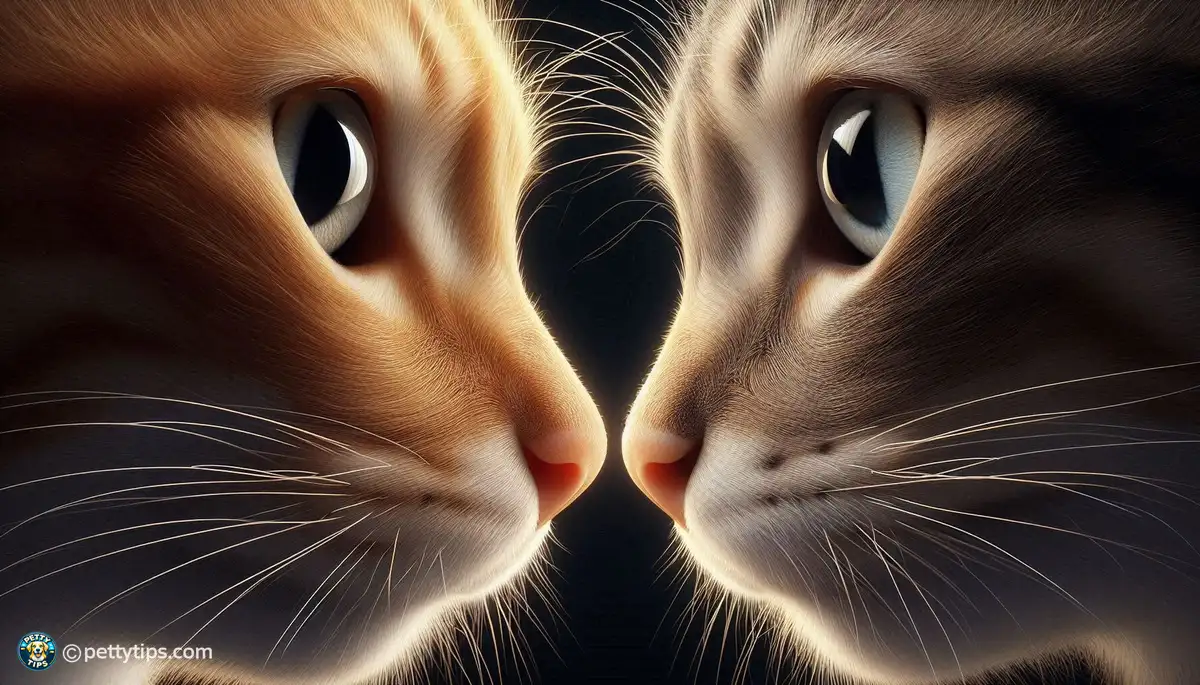
Deciphering Feline Health: The Significance of Grooming Habits
Felix Guffey - Sep 28, 2024 - 6 min read


Cats are notorious for their keen sense of smell, often overlooked in favor of their impressive agility or adorable antics. However, their olfactory prowess plays a crucial role in their communication with each other and with their human companions. The feline nose is a marvel of nature, equipped with up to 200 million scent receptors, compared to a human's mere 5 million. This abundance of olfactory cells allows cats to detect scents with incredible sensitivity, far beyond the capabilities of humans. Each cat's unique scent profile serves as a personalized calling card in the intricate world of feline communication.
One of the most common ways cats utilize their sense of smell to communicate is through scent marking. By rubbing their face or body against objects, cats deposit pheromones secreted from glands located on their cheeks, chin, and paws. These pheromones contain valuable information about the cat's identity, age, reproductive status, and even emotional state. When a cat marks its territory in this way, it sends a clear message to other felines that this space is claimed. Similarly, when cats engage in mutual grooming, they exchange scents, reinforcing social bonds within a group.
While it may not be the most pleasant aspect of cat behavior, urine marking is another important form of olfactory communication. When a cat sprays urine, it is not simply relieving itself but leaving behind a potent message for other cats. Urine contains chemical signals that convey information about the marking cat's gender, reproductive status, and even its confidence level. Male cats, in particular, use urine marking to assert dominance and advertise their presence to potential mates. Understanding the nuances of urine marking can provide valuable insights into the social dynamics of feline groups.
In addition to marking territory, cats use their sense of smell to identify familiar individuals within their social circle. Kittens learn to recognize their mother's scent shortly after birth, forming a bond that persists into adulthood. Siblings and other closely related cats also share similar scent signatures, facilitating cooperation and mutual support within family units. This recognition of kinship helps prevent conflicts and fosters a sense of belonging among group members.
Just as humans exchange pleasantries and engage in small talk to navigate social interactions, cats use scent to communicate their intentions and establish rapport with other felines. When two cats meet for the first time, they engage in a delicate dance of olfactory investigation, sniffing each other's faces, bodies, and even rear ends. This ritual allows them to gather information about the other cat's identity, health, and emotional state, paving the way for future interactions. By interpreting subtle changes in scent, cats can gauge whether a newcomer is friend or foe, ally or adversary.
Pheromones play a pivotal role in feline communication, serving as powerful chemical messengers that convey emotions and intentions. When a cat feels threatened or anxious, it may release stress pheromones as a signal to others in its vicinity. Conversely, when a cat is relaxed and content, it emits calming pheromones that promote a sense of security and well-being. Products containing synthetic pheromones, such as Feliway, have been developed to help alleviate stress-related behaviors in cats, mimicking the comforting signals of a mother cat or a trusted companion.
In the wild, where territories are vast and encounters with other animals are frequent, scent plays an even more crucial role in feline communication. Wild cats, such as lions, tigers, and cheetahs, rely on scent trails to navigate their surroundings and locate prey. They also use scent marking to demarcate territory boundaries and advertise their presence to rivals. By leaving behind a trail of chemical breadcrumbs, wild cats can communicate with distant conspecifics without ever coming face to face.
For solitary hunters like the elusive snow leopard or the solitary jaguar, scent-based communication is essential for survival. By carefully monitoring scent markings left by other animals, these solitary predators can avoid potentially dangerous encounters or, conversely, seek out potential mates. Scent also plays a crucial role in the mating rituals of many wild cat species, with males and females engaging in elaborate scent-based displays to attract suitable partners.
Studying the olfactory communication strategies of domestic and wild cats can provide valuable insights into the evolutionary origins of this fascinating behavior. By comparing the scent-marking behaviors of different species, researchers can unravel the underlying genetic and physiological mechanisms that govern olfactory communication. These insights not only deepen our understanding of feline behavior but also shed light on the broader evolutionary forces shaping the animal kingdom as a whole.